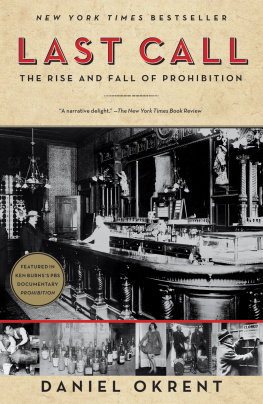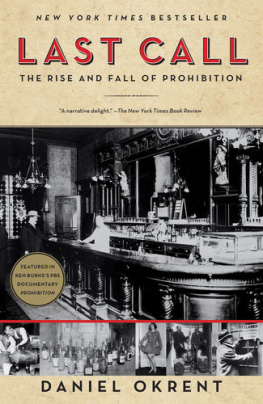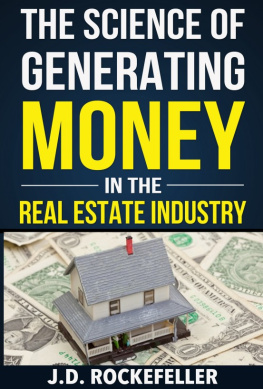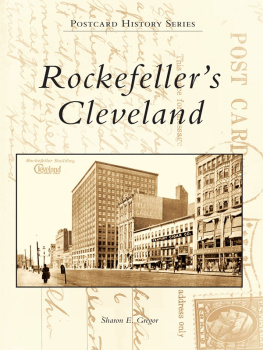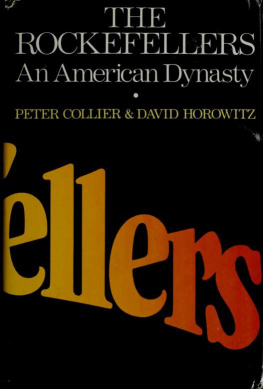
RCA Building, 1933, by John C. Wenrich
PENGUIN BOOKS
An imprint of Penguin Random House LLC
375 Hudson Street
New York, New York 10014
penguin.com
First published in the United States of America by Viking Penguin, a member of Penguin Group (USA) Inc. 2003
Published in Penguin Books 2004
Copyright 2003 by Last Laugh, Inc.
Penguin supports copyright. Copyright fuels creativity, encourages diverse voices, promotes free speech, and creates a vibrant culture. Thank you for buying an authorized edition of this book and for complying with copyright laws by not reproducing, scanning, or distributing any part of it in any form without permission. You are supporting writers and allowing Penguin to continue to publish books for every reader.
Grateful acknowledgment is made for permission to reprint the following copyrighted works: Excerpt from At the Roxy Music Hall by Lorenz Hart and Richard Rodgers. 1938 (renewed) EMI Robbins Catalog Inc. All rights reserved. Used by permission of Warner Bros. Publications U.S. Inc., Miami, Florida. I Paint What I See by E. B. White. Reprinted by permission. E. B. White. Originally published in The New Yorker. All rights reserved.
Ebook ISBN 9781101666906
THE LIBRARY O F CONGRESS HAS CATAL OGED THE HARDCOVER E DITION AS FOLLOWS:
Okrent, Daniel, date.
Great fortune : the epic of Rockefeller Center / Daniel Okrent.
p. cm.
Included bibliographical references and index.
ISBN 9780670031696 (hc.)
ISBN 9780142001776 (pbk.)
1. Rockefeller CenterHistory. 2. New York (N.Y.)History18981951. 3. New York (N.Y.)Buildings, structures, etc. 4. ArchitectureNew York (State)New YorkHistory20th century. 5. Rockefeller family. 6. New York (N.Y.)Biography. 7. InterviewsNew York (State)New York. 8. Oral history.
I. Title.
F128.8R7038 2003
974.71dc21 2003050187
Maps by Anita Karl and Jim Kemp
Version_1
TO LAWRENCE F. H. OKRENT,
who got me interested in
everything thats interesting
Jim said he would not mind standing all day in Radio City, where the French and British shops and the travel offices were, and the evergreens at Christmas and the tulips in the spring and where the fountains in summer sprayed ceaselessly around Mr. Manships golden boy and where exhibition fancy skaters salved their egos in the winter. If he grew tired of the skaters, Jim said he would not mind standing and staring up and up, watching the mass of building cut into the sky. It made him know what people wanted and what they thought.
John P. Marquand, So Little Time
They all laughed at Rockefeller Center
Now theyre fighting to get in.
Ira Gershwin
A NOTE TO THE READER
P LACES : I wish the names of buildings were as simple as, say, designing, erecting, and occupying a group of remarkable structures in the heart of Americas largest city in the middle of the Great Depression. In most instances my proper nouns are the ones in use during the periods Im writing about. Therefore, at different points in this book different names are used to describe one thing: Metropolitan Square, Radio City, Rockefeller City, Rockefeller Center; looking back from today, its always Rockefeller Center. For individual buildings Ive generally used the names they were known by when builtthus, the building now called 1270 Avenue of the Americas is referred to here as the RKO Building; the Time & Life Building I refer to is the original version, south of the skating rink, and not the current one on Sixth Avenue. (The illustration on pages viiiix should clarify any nomenclatural murkiness.) By Rockefeller Center itself, I mean those buildings completed before World War II. The two later buildings in the original style (Sinclair and Esso) and all those across Sixth Avenue, from 46th Street to 51st Street, are formally part of Rockefeller Center, but not of the concept that became Rockefeller Center.
N UMBERS: Dates of buildings vary by sourcesome authorities use the date when construction begins, some the date when it ends. When in doubt, Ive gone with the dates provided by Norval White and Elliot Willensky in their indispensable AIA Guide to New York City. The height of buildings, in feet as well as in stories, is often the concoction of developers and their publicists, who like to count rooftop air vents, water tanks, radio antennae, and anything else that can stretch the official number. Ive generally allowed them their fun, except where its material, as in the case of the sixty-six- (or maybe sixty-seven-, but not remotely seventy-) story RCA Building. Same with quantity of buildings: Rockefeller Center management has always counted the six-story eastern appendages of the International Building as separate structures, but the whole thing is clearly one building, and I count it as such.
P EOPLE: The only nomenclatural issue here has to do with the family at the books heart, the Rockefellers. The three men bearing the name John Davison Rockefeller are here referred to in two instances by the names by which they are known to the family archivistsSenior and Junior. The third, depending on context, is either Johnny or John.
Some readers may think a more material issue concerning people has to do with gender: save for a very few lesser characters, this saga has an all-male cast. This is a reflection of the era, and not of any authorial bias.
Finally, a comment on memory: Interviews are great for color and for a sense of personality. But even those conducted much closer to the events described herethose compiled by the Columbia University Oral History Project, for instance, or by the excellent architectural historian Carol Herselle Krinskyare flawed by that most unreliable of research tools, memory. Contemporary documents, however, are precise. When Ive encountered a conflict of facts, either I point it out in context or go with the one that seems to me, after six years immersion in this project, to be accurate. In a jump ball, the document almost always wins.
D. O.
New York, March 2003
PROLOGUE
MAY 21, 1928
All the men entering the gleaming marble hall of the Metropolitan Club had arrived at Fifth Avenue and 60th Street on the wings of their wealth. The guest list was a roll call of New Yorks richest: corporate titans Marshall Field, Clarence Mackay, and Walter P. Chrysler; Wall Street operators Jules S. Bache, Bernard Baruch, and Thomas Lamont; various Lehmans and Whitneys, Guggenheims and Warburgs, men whose very surnames provided all the definition they needed. Financier Otto Kahn was there, for Otto Kahn was ubiquitous in New York if opera was on the agenda, as it was on this balmy night. But an interest in Verdi or Wagner was not the primary qualifier for inclusion on the invitation list. According to a young architect named Robert OConnor, whose father-in-law was scheduled to be the featured speaker, the evenings host had simply invited everyone he knew who had more than ten million dollars.
Not all of them belonged to the Metropolitan Club, but there was no better venue for a convocation of the New York plutocracy. J. P. Morgan had founded the Metropolitan in 1891, after his friend John King, president of the Erie Railroad, was blackballed by the Union Club (Morgan said it was an act of spite; others insisted that certain members were offended by Kings dreadful table manners). Morgans stature had guaranteed a membership distinguished not solely by heredity or by financial success but by an unprecedented confluence of both. By 1928 the Metropolitan membership included two Vanderbilts, three Mellons, five Du Ponts, and six Roosevelts. It also included three men who were parties of interest to the evenings proceedings. One was the host, an aristocrat named R. Fulton Cutting, known to some as the first citizen of New York. Another was Nicholas Murray Butler, president of Columbia University and a member of the Metropolitans board of governors, who knew that the future of his institution was to a large degree dependent on the evenings outcome. The third was Ivy Ledbetter Lee, a preachers son from Georgia representing the man who, even in his absence, was the lead player in the evenings drama.


